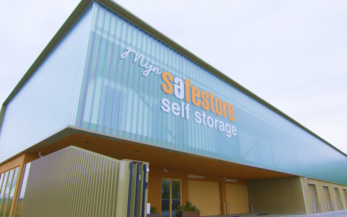6 minutes12/10/2018
Written by Timo Kronlöf
Have you thought about acquiring software for health, safety and environmental (HSE) management? During your career, have you perhaps already been involved in the procurement, definition or implementation of software? Do you ever wonder if everything went as planned, and whether you leveraged the solution to the fullest? If you have thought about these matters described above, I would recommend that you read this article. As it turns out, my team and I think about these matters for a living, and we have gained valuable experience, which I would like to share with you, so nobody has to make the same mistakes I did.
Of course, the first step in the process is to take stock of your current situation. Being satisfied with what you have is the first sign of decline. The concept of Continuous Process Improvement (CPI) means we should continue to look for new things to develop within our scope of responsibility, every day, all year long. Since you are reading this, I presume you are one of those people who aren’t satisfied with the status quo, but always looks to improve on things further. That’s great!
Goals of software procurement
Many people may question the very thought of software being a solution for anything. After all, everything stems from people and human actions, and IT systems do not actually do things for us. We have done well so far, haven't we? Wrong! Think about this from a different angle: what if there was no email, would you be happy using paper mail, as it served us fine in the past? Or, would you rather go to the bank on a daily basis to pay your bills, as if there were no e-banking services? If your answer is “yes”, you can stop reading now. On the other hand, if you feel that information systems and software have made your life easier and made your use of time more effective, I congratulate you. The same goes for HSEQ software; you would probably do well without them too, but your progress would stall rather quickly, as there is no time left for running all kinds of graphs and reports.
If you really want to minimise and manage risks, you must first know which risks are the greatest, and where you should allocate resources. HSEQ software should help manage activities and resource allocation, so that the greatest risks are dealt with first, leaving you with time and resources to monitor any residual risks systematically. One of the most important advantages of software is saving time, thanks to which you can do more in the future, with the same resources in less time. The larger the organisation, the greater the productivity gains. In a company of a thousand people, this is a question of annual savings up to hundreds of thousands of euros.
Which software is right for us?
The correct question during the initial phase is “How to tell which software is right for us?” Everything starts with your needs. Let us go back to the beginning: which problematic issues do you want to solve? Think about which matters in the HSEQ processes take the most time within your own team. And which take up the most time of your superiors? Also, write down which processes you already have, and which processes you would like to have. With the HSEQ processes, I mean, for example, the process of error notification and its investigation process, inspection activities, or the risk evaluation processes. Other general procedures may include safety walk-throughs, management overviews, toolbox talks, safety sessions, 5S inspections. Is the use of dangerous substances and operational safety bulletins – complete with updates – under control? Think about which kinds of developmental needs you, in particular, might have.
Software users and the target group
When following the steps above, you will find that you already have a good list to determine your future software. With it, you will be able to highlight your potential solution providers. This is a great starting point. Afterwards, however, there might be a need to expand your horizons by getting input from colleagues from other areas of expertise. I recommend asking your IT department for support of the project. IT will typically have their own demands on the desired solution, with regard to data security, integration capabilities and the IT architecture of your organisation. If you are using some ERP or HR solution for systems management, it may be wise to consider how to get the various solutions to work together. I think that for many, user management is becoming more and more centralised, thanks to solutions like Active Directory (AD), which significantly alleviates the administration of access rights of the users of various software. With AD integration, all access rights can be managed in one place: your admin can revoke access rights to many applications at once or grant any new employee access rights to various systems, right at the start of their employment.
Consider also the target group for your HSEQ solution. Is it primarily management, or will it be all of your employees? I personally strongly believe that everyone should have access to the HSEQ solution, albeit in a limited scope, with access rights carefully managed. Visibility should be manageable for various user groups, with regards to confidential information, such as accidents. Verify this.
A current requirement, which I believe will become even more significant in the future, is interfaces. With the help of interfaces, information can move between various systems seamlessly, according to your needs. You can leverage this feature to analyse your data more broadly and deeply, for example, in your own BI system.
And is your organisation mainly in the field or in a fixed location, where everyone has access to a computer? In case of working in the field, a mobile solution becomes the preferred option. However, if you don’t have access to the best possible network (4G), you might need to install a native application to ensure a smoothly operating software. Offline functions are quite limited in so-called responsive mobile applications, which are used through a browser.
Why not self-development?
What is wrong with using Excel and Intranet? Or are you tempted to develop a solution yourself, or with a partner? It might sound like a nice project, to design the solution exactly according to your needs, and then ask a software provider to develop it for you. If you are tempted to pursue this option, I would like to present a few viewpoints to consider related to the subject.
How much time are you willing to commit to spec’ing the solution internally? What if there are errors in the technical specification and the end result does not meet your goals? Will you be able to determine the exact required internal and external amount of work for the development project, or might the project’s costs go above budget? What happens after your tailored software is ready? Who will maintain the service? Who will develop the service for the next 5 years? What will changes in the software cost?
Short-term, you can get a good solution if you develop it yourself. At a bare minimum, you should be able to improve on your current solution. Long-term, however, proprietary software cannot compete with the SaaS (Software as a Service) model, since the SaaS solution is in constant development, and the more time passes by, the greater the difference will be between the proprietary solution and the SaaS service. If you are leaning towards a SaaS service, you should think about which kinds of resources are being developed for the application in question, in relation to your organisation’s needs. Momentary problems can generally be resolved easily, if the support and contact person are close at hand, and you usually have a dedicated contact at the service provider, with existing support.
Are you ready to progress?
I hope that this article was useful to you, as you wrestle with your ideas for development. In any case, my hat is off to you, as you are the person taking responsibility in the matter, with a desire to advance an important issue. I believe that software has been significantly responsible for reducing the number of occupational accidents, specifically when it comes to serious injuries. What is true for HSEQ management, in general, holds true for software too: do not make the same mistakes twice. We are happy to share our expertise, if you are interested in hearing more about what our team of more than 150 people is doing, in the areas of safety and environment management.
Quentic offers comprehensive and modular EHS software. We can help you to build EHS Software which best fits your needs.



